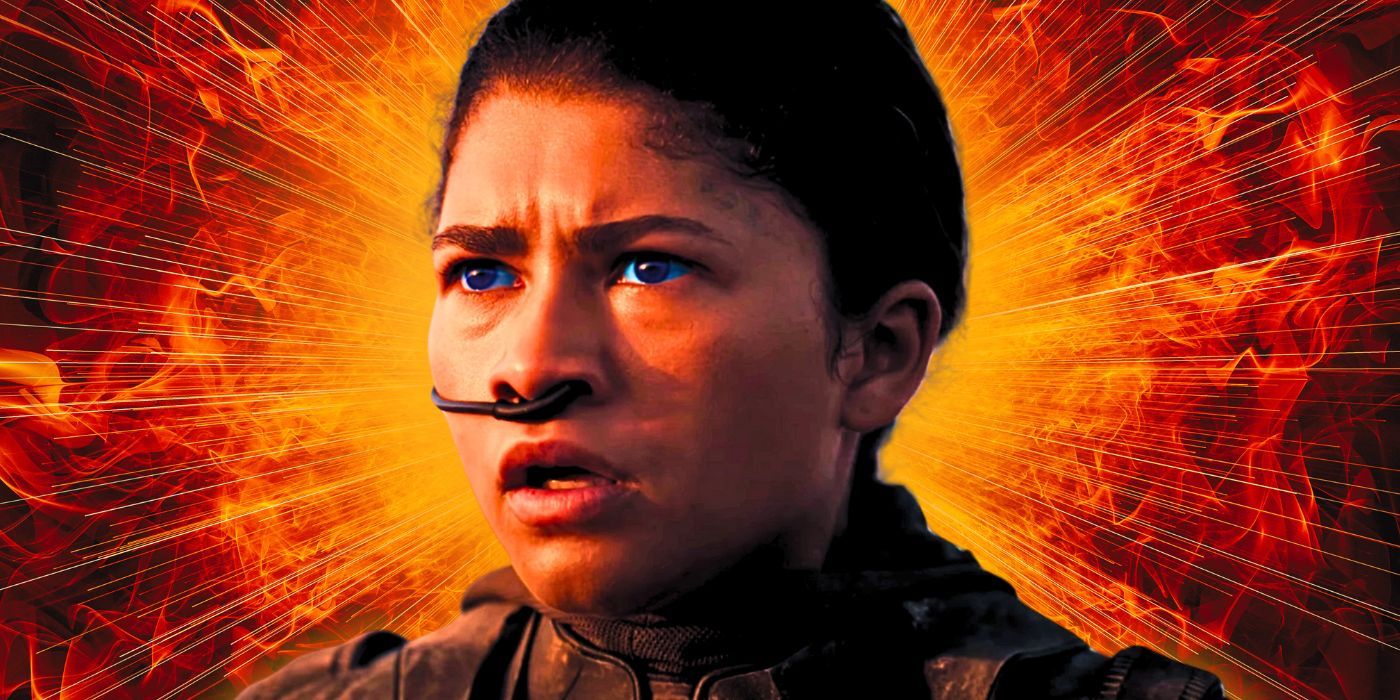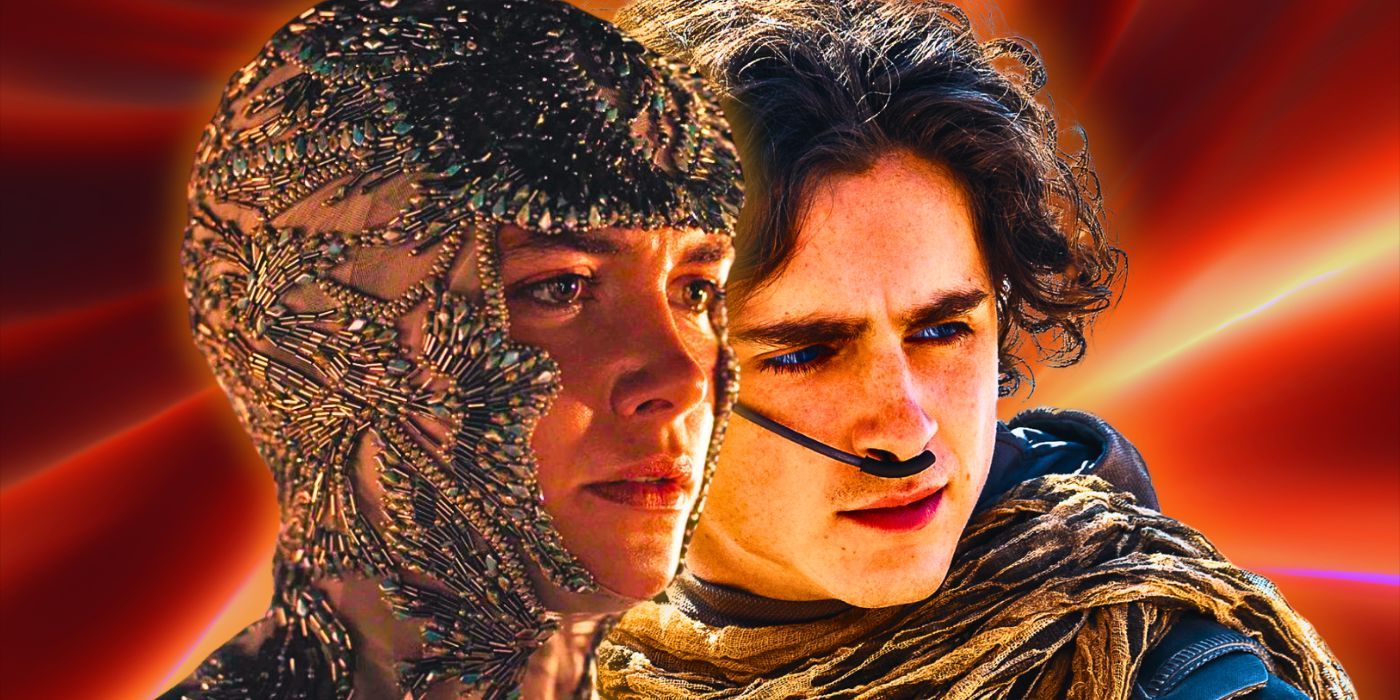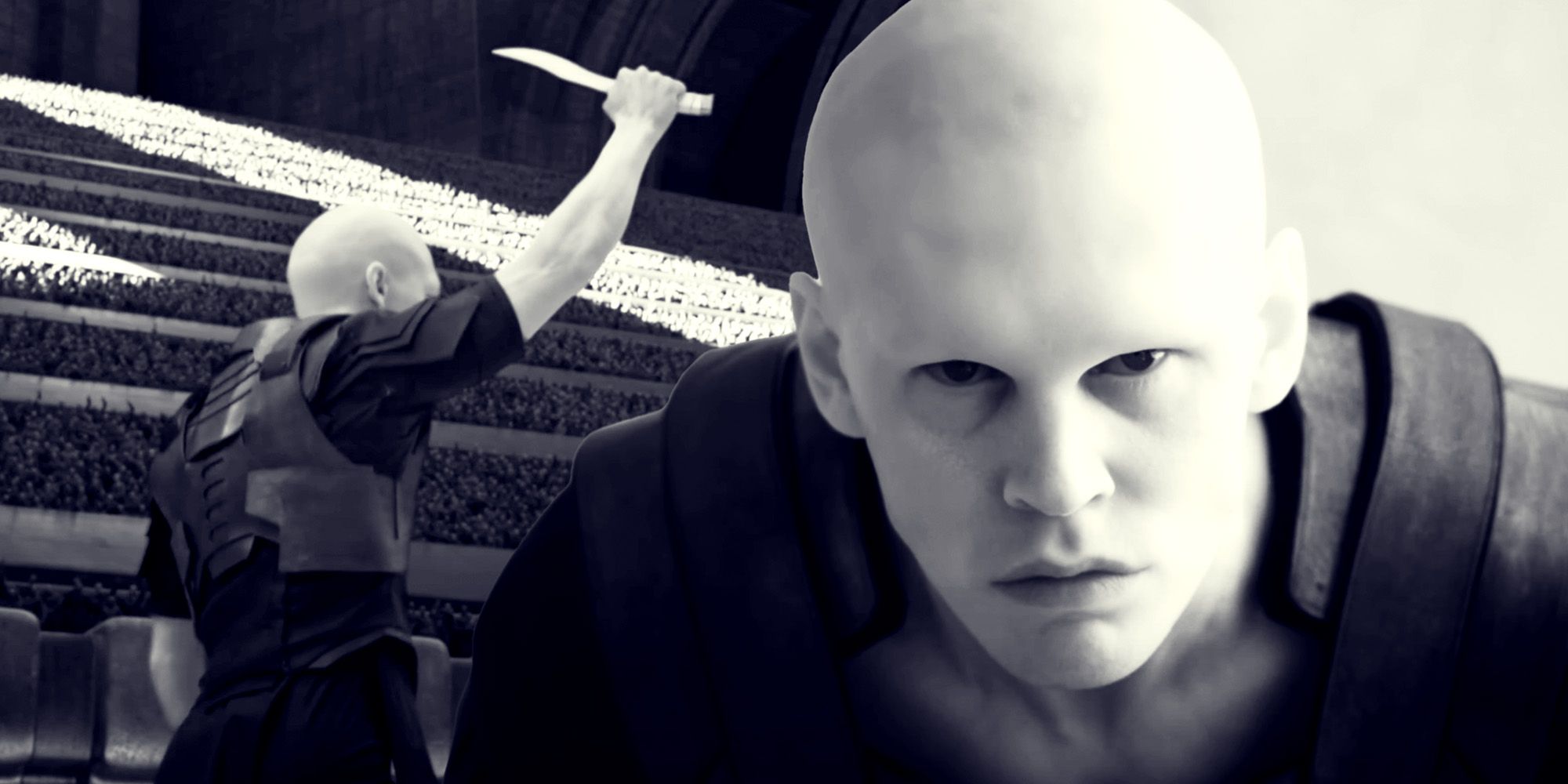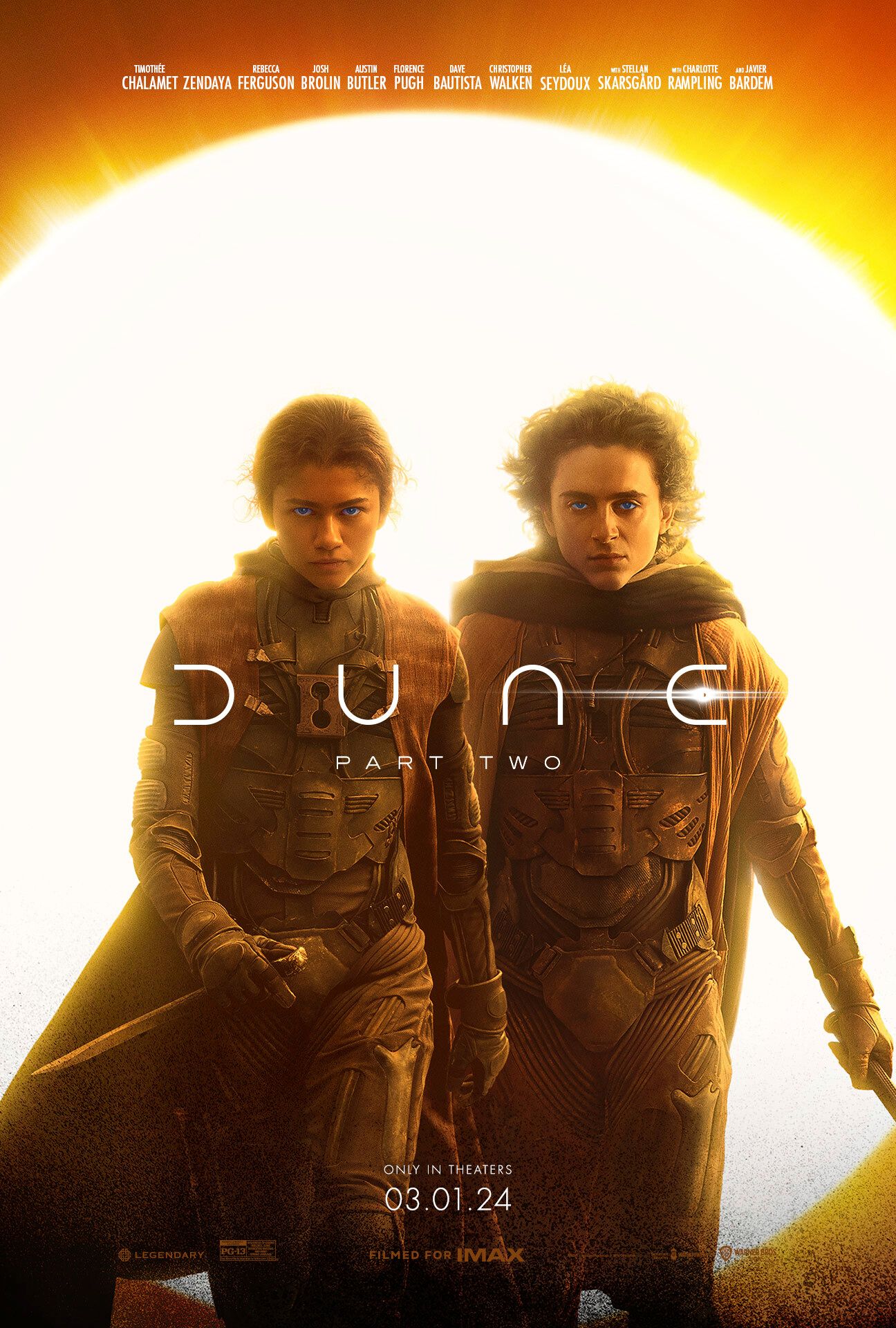Why The Harkonnen Planet Is Black & White In Dune

Summary
- Giedi Prime’s black and white aesthetic symbolizes the Harkonnen’s descent from the natural world and humanity.
- The Black Sun on Giedi Prime affects the Harkonnen’s psyche, creating a bleak, ominous, and unsettling atmosphere.
- Villeneuve’s unique vision in Dune: Part Two brings Giedi Prime to life in a haunting, alien monochrome.
The black and white Harkonnen planet in Dune: Part Two is just one of the many mesmerizing visuals in the celebrated movie. While most of the film takes place with Paul, Chani, Lady Jessica, and the Fremen on the desert planet Arrakis, there are also several scenes on Giedi Prime, the home planet of House Harkonnen, that are full of blinding light and deep contrast. The monochrome planet is completely devoid of color during the daytime as a result of the planet’s surrounding Black Sun, which thematically fits with the ominous tone of its native people.
While there were some scenes of Giedi Prime featured in Dune (2021), they all took place at night, which meant they were unaffected by the penetrating light of the Black Sun. The unforgettable monochrome effect on Giedi Prime is highlighted during the first few introductory scenes of Austin Butler’s Feyd-Rautha character in Dune: Part Two, in which he battles in a gladiator-like arena. Since releasing in theaters on March 1, Dune: Part Two has become the highest-grossing film of the year through the first half of 2024, earning roughly $860 million worldwide. Dune: Part Two is now streaming exclusively on Max.
House Harkonnen Is Black & White In Dune Due To Giedi Prime’s Black Sun
The Black Sun’s light washes all color from Giedi Prime
The distinct use of black and white in
Dune: Part Two
emphasizes how far House Harkonnen has descended from typical human perceptions of flourishing beauty.
Director Denis Villeneuve brought Frank Herbert’s original description of Giedi Prime to life in Dune: Part Two to life, and even enhanced it using infrared cameras. This filmmaking approach created a haunting aesthetic that was more compelling than typical black and white and ultimately personified the ghoulish and unnatural tone of House Harkonnen. The Black Sun that was introduced in Herbert’s novel gave the impression of a nation completely rid of the lush greens and vibrant colors that normally signify life to humans, which Villeneuve and cinematographer Greg Fraser expertly captured in Dune: Part Two.
The distinct use of black and white in Dune: Part Two emphasizes how far House Harkonnen has descended from typical human perceptions of flourishing beauty. Fraser was able to envision the effects of Herbert’s Black Sun concept by modifying an ARRI Alexa LF IMAX camera to shoot entirely infrared. The end result is an alien type of monochrome that is noticeably different from standard black-and-white cinematography. Due to the Harkonnens’ extremely pale complexion and dark, unsettling eyes, they appear to seamlessly blend into the world of Giedi Prime under the intense light of the Black Sun.
3:21
Related
The Atreides/Harkonnen Family Tree Explained
As proven by Dune: Part Two’s twists and turns, the Atreides and Harkonnen family tree is complicated, but understanding the bloodlines is crucial.
How Giedi Prime’s Black Sun Physically Affects The People On The Planet
The monochrome highlights the lack of nature on Giedi Prime
The Black Sun could also contribute to a lack of proper nourishment from a more typical sun, alluding to some type of vitamin or other nutritional deficiencies that have psychological effects on House Harkonnen.
Villeneuve referred to his vision of Giedi Prime as a “plastic planet“, which is perfectly realized in Dune: Part Two. Normally, the sun is considered the source of life in most contexts, whereas the night is primarily a period of rest. This notion is completely flipped for House Harokonnen on Giedi Prime, since life only appears normally once the Black Sun sets. This has a lasting effect on the Harkonnen’s collective psyche and makes periods of daylight much more bleak and ominous, full of the absolute contrast of dark versus light. This aligns with their concept of absolute power and seeing the world in binary systems (strong/weak, rich/poor, etc.).
The intense light of the Black Sun also explains the densely dark clothes that House Harkonnen wears, since color has virtually no meaning during the day. It could also imply a lack of proper nourishment from a more typical sun, alluding to some type of vitamin or other nutritional deficiencies because of what the Black Sun cannot offer. This kind of malnourishment could have a wide range of medical and psychological effects and could inspire negative attitudes or behaviors. Although the psychology of the Harkonnen is not deeply explored in Dune 2, the appearance of Giedi Prime appears to have a big impact.

Related
Where Chani Goes At The End Of Dune 2 & What It Means For Dune 3
Chani’s decision to leave at the end of Dune: Part Two was shrouded in mystery, and it has massive implications for the future of the story.
What Denis Villeneuve Has Said About The Harkonnen’s Black & White Planet
The visual choice reflects the collective psyche of the Harkonnen
Villeneuve has commented on Giedi Prime, saying, “I thought that it could be interesting if the light, the sunlight could give us some insight on their psyche. What if instead of revealing colors, the sunlight was killing them and creating a very eerie black and white world, that will give us information about how these people perceive reality, about their political system, about how (sic) that primitive brutalist culture.” Villeneuve added, “I wanted a black and white that would seem alien and coming from another world, a sunlight that we have not seen in cinema.” Giedi Prime was just one of Villeneuve and Fraser’s cinematic achievements in Dune: Part Two.

Related
Every Major Death In Dune 2, Explained
Dune: Part Two has some pretty brutal deaths, which play into the film’s themes and will radically alter the galaxy going into a potential third film.










